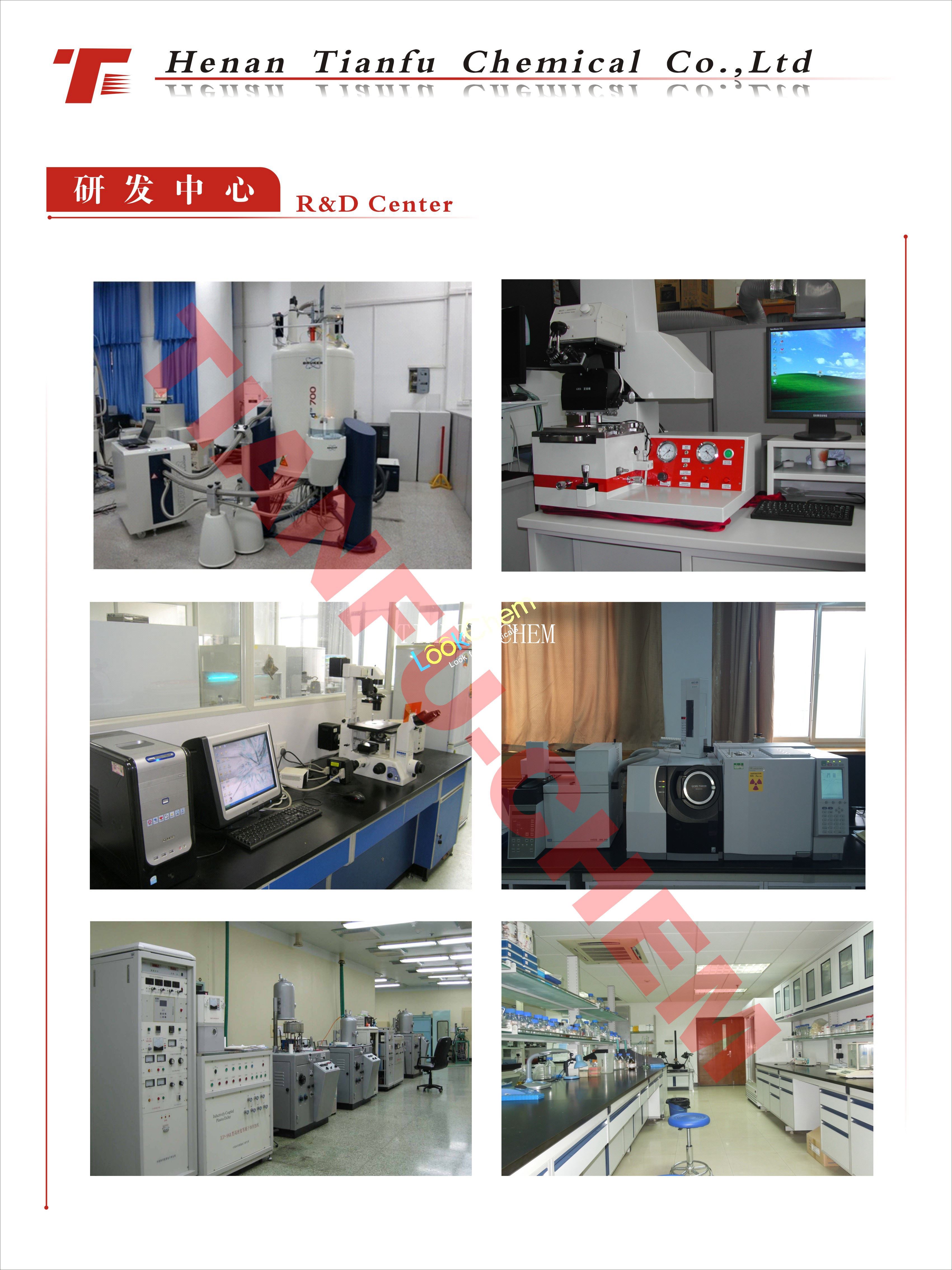- Min.Order :1 Kilogram
- Purity: 99%
- Payment Terms : L/C,T/T
Keywords
220620-09-7 Tigecycline C29H39N5O8
Quick Details
- Appearance:white powder
- Application:pharma
- PackAge:as clients needs
- ProductionCapacity:1|Metric Ton|Day
- Storage:RT
- Transportation:sea
Superiority:
Our company was built in 2009 with an ISO certificate.In the past 6 years, we have grown up as a famous fine chemicals supplier in China and we had established stable business relationships with Samsung,LG,Merck,Thermo Fisher Scientific and so on.Our main business covers the fields below:
1.Noble Metal Catalysts (Pt.Pd...)
2.Organic Phosphine Ligands (Tert-butyl-phosphine.Cyclohexyl-phosphine...)
3.OLED intermediates (Fluorene,Carbazole,Boric acid...)
4.Customs Synthesis
Our advantage:
1. Higest quality and good package
2.Fast delivery
3.Better payment term
4.Fast response to customer within 6 hours
5.Good business credit in Europe ,US ,Japan ,Korea
Anyway ,if you need any chemicals from China ,Henan Tianfu can help you

Details:
Tigecycline Chemical Properties
Melting point 164-166°C
storage temp. Amber Vial, -20°C Freezer
Merck 14,9432
CAS DataBase Reference 220620-09-7(CAS DataBase Reference)
Safety Information
Safety Statements 24/25
RIDADR 3077
RTECS QI7619500
HazardClass 9
PackingGroup III
MSDS Information
Tigecycline Usage And Synthesis
Indications and Usage Tigecycline is also called 9-tert-glycylaminomycetine or diclofenac, and it is a new type of venous injection antibiotic with broad-spectrum activities. It is a type of 9-tert-glycylaminomycetine derivative and is the first glycylcine antibiotic.
Tigecycline can serve as a second option after failed first-line treatment for multi-drug resistant bacteria, and it is also a new treatment option for patients who are allergic to penicillin or intolerable to other drugs. It can treat patients 18 years old or above with complex skin and skin structure infections or complex abdominal infections such as complex appendicitis, burn infections, abdominal abscesses, deep soft tissue infections, and ulcer infections.
Mechanisms of Action Tigecycline’s mechanisms of action are similar to those of tetracycline antibiotics, which are binding with bacterial 30S ribosomes to prevent transfer RNA from entering, making it impossible for amino acids to form peptide chains, thus preventing bacterial protein synthesis and limiting bacterial growth. However, tigecycline’s ability to bind with ribosomes is 5 times that of other tetracycline antibiotics, which means that tetracycline’s anti-drug resistance ability is stronger. Tigecycline’s structure is similar to that of minocycline, but tigecycline’s antibacterial activity is much stronger, and bacteria are less likely to develop resistance to it compared to other tetracycline drugs, and it can also act on the methicillin-resistant Staphylococcus aureus. Tigecycline’s antifungal spectrum includes gram-positive bacteria, gram-negative bacteria and anaerobic bacteria. In vitro experiments and clinical trials showed that tigecycli

You Might Also Like
-
25377-73-5 DODECENYLSUCCINIC ANHYDRIDE
CAS NO:25377-73-5
-
High Quality N,N'-(decane-1,10-diyldi-1(4H)-pyridyl-4-ylidene)bis(octylammonium) dichloride Octenidine dihydrochloride 70775-75-6
CAS NO:70775-75-6
-
High Quality Diethyl malonate 105-53-3 In Stock Supply
CAS NO:105-53-3
-
2378-02-1 PERFLUORO-TERT-BUTANOL 99%
CAS NO:2378-02-1
-
2926-29-6 Sodium trifluoromethanesulfinate 99%
CAS NO:2926-29-6
-
CAS 621-27-2 3-N-PROPYLPHENOL
CAS NO:621-27-2
Related Searches
About|Contact|Cas|Product Name|Molecular|Country|Encyclopedia
Message|New Cas|MSDS|Service|Advertisement|CAS DataBase|Article Data|Manufacturers | Chemical Catalog
©2008 LookChem.com,License: ICP
NO.:Zhejiang16009103
complaints:service@lookchem.com Desktop View